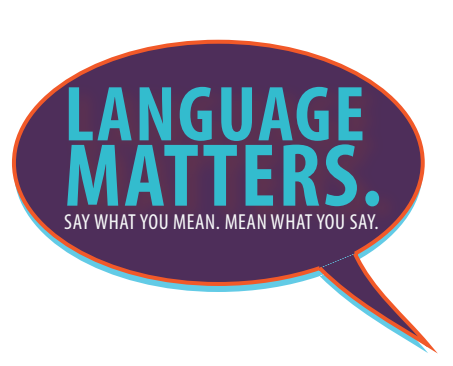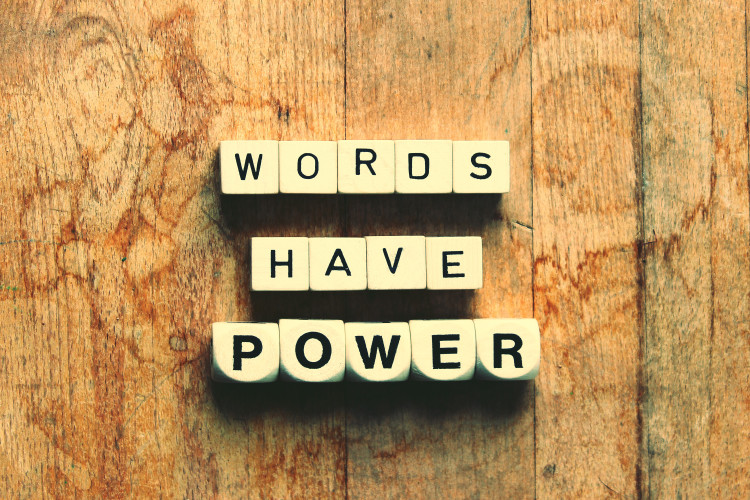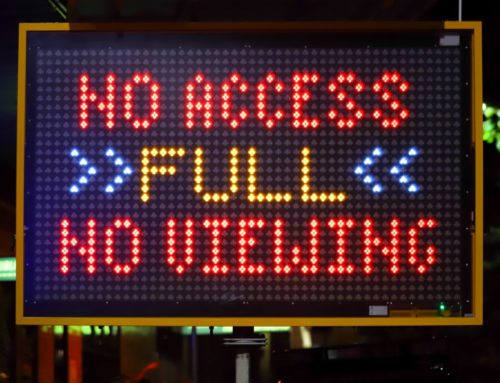I had been a sking around, researching, and interviewing nonprofit friends about inclusive language for the upcoming webinar Don’t Call Them That: Language that Divides, well before the most recent national controversy.
sking around, researching, and interviewing nonprofit friends about inclusive language for the upcoming webinar Don’t Call Them That: Language that Divides, well before the most recent national controversy.
Now it seems as though the international conversation (albeit embarrassing) has forced us to talk to each other about things said behind closed doors (and sometimes in public).
Although there have been denials about the exact words used to describe certain countries during recent high-level government meetings, the underlying notion that certain countries are “less than” has caused many nonprofits to examine their own language (and long-held beliefs). The scenario reminds us that we should be talking about language that hurts and this is the perfect time to sit down and discuss how much language matters in our communications.
Cringe-worthy words such as “these people” and “at-risk” have bothered many of us in the nonprofit world for decades. Having been an executive director of an affordable housing nonprofit and previously working for a youth foundation located in public housing communities exposed a lot of ugly language. I’ve encountered dozens of meetings where I have had to challenge the notion of “bad neighborhoods” or “crime infested communities.” It was easy for me to speak up because I grew up on some of those streets being framed as “bad.” In some cases, I had family living in what were being called “undesirable” communities.
“My uncle sent his pay home from Vietnam and my grandparents saved it as a down payment for a home on that very block,” I explained when a board member called my old neighborhood a “slum.” “I wouldn’t have wanted to grow up anywhere else.” I encouraged the group to recognize that even if you can’t see it or measure it monetarily— all neighborhoods (and countries) have social capital and value.
So in a sense, the White House S—tstorm was good for helping expose these necessary conversations that typically takes place behind closed doors.
How can nonprofits be leaders in this conversation?
Inclusive statements:
I recommend starting with a Statement of Equity and Inclusion. The statements should convey, in a genuine way, that your agency is a safe and inclusive place where any individual or group can be and feel welcomed, respected, supported, and valued to fully participate. Check out my blog post that answers the question, “How can your nonprofit model language for diversity, inclusion, and equity?”
It’s more than another document to put on a shelf…
It has the potential to:
- Kickstart dialogue within your agency about equity and inclusion
- Send a welcoming message to people of all backgrounds
- Create a method of accountability and core values for your agency
*Note that writing a Statement of Inclusion could also lead to the discovery that your agency is not as inclusive as you hoped. This revelation could be a challenge for communications professionals out there. Be prepared for honesty. Don’t fret. We will provide tools for this type of conversation later in the Inclusive Conversations series.
Day-to-day:
Using inclusive language should be a priority beyond open and affirming statements. Increasing the inclusiveness of your daily language means working to understand how often unconsciously we make assumptions about people and unintentionally reinforces stereotypes around gender, orientation, ethnicity, class, ability/disability, age and other identities and experiences.
Here are a few things to be mindful of in your daily communications:
- Using “person-centered” language
- Being intentional (but not tokenly) in stories and visuals
- Avoiding negative, demeaning, and/or marginalizing language
- Using language that does not assume all people are…
- Recognizing diverse family formations
- Asking what people prefer to call themselves
We will discuss each of these categories during the upcoming Don’t Call Them That webinar.
Collaboration is key:
I recently practiced what I preach in working with a team on a nonprofit communications strategy evaluation for Women AdvaNCe. We wanted our survey to model inclusion, so we brought in several women from across the state to form an evaluation committee. We decided to create a survey that allows people to check more than one identity box. It’s a little more work on the data collection side but we feel like it reflects our commitment to inclusion. Thanks to our collaboration, diversity will truly inform to organizations future communications strategies. Here are some examples of our demographic questions:
How would you describe your gender?
- Woman
- Man
- Non-binary/ Third gender
- Prefer to self-describe _______
- Prefer not to say
How would you describe your racial or ethnic identity? (Select all that apply)
- African-American or Black
- Asian
- Hispanic or Latinx
- Native American or Alaskan Native
- Middle Eastern
- Pacific Islander
- White
- Other_______
- Prefer not to say
The process of creating these questions proves that there is strength in working together on these types of projects.
Join the Judgement Free Zone for Inclusive Conversations:
We recognize that communications professionals aren’t going to be perfect in every area of cultural competency, but your commitment to understanding will go a long way. This series is another tool to help make your communications strategies more effective.
Note: *We are working on a better name for The Judgement Free Zone that Nonprofit Marketing Guide is building around the Inclusive Conversation Series. What we are trying to communicate is that we want people to feel more equipped after these conversations. We don’t want you to leave our trainings paralyzed with fear of “saying the wrong things.”
I keep going back to a conversation with my friend, Crystal Richardson, former director of advocacy and outreach at Equality NC about this series of conversations. She reminded me of its importance. Given the divided times that we live in, not acknowledging safety and inclusion upfront can lead to negative assumptions. We can’t be afraid to make a move without getting it wrong. “If you come from a place of respect, most people aren’t offended by that. It’s the fact that you are making an effort to recognize all we want is basic human respect.”
We look forward to more Inclusive Conversations!
Inclusive Conversations: Don’t Call Them That…Language that Divides will take place Thursday, February 15th at 1:00 P.M. Eastern (10:00 A.M. Pacific). Registration is $50 or free with an All-Access Pass. Learn more and join us!





